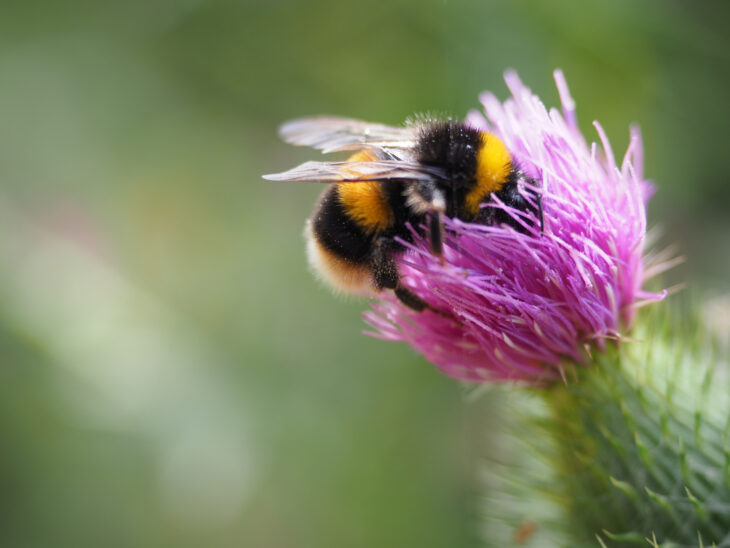Flowers and other plants need pollinating insects to spread and reproduce. Their bright colors and intense smells attract bumblebees that pollinate them, playing a key role in their survival. Without pollination, most fruits, vegetables, flowers, and plants wouldn’t grow and diversify. Bumblebees, in turn, go from flower to flower eating nectar and collecting the nutrient-rich pollen for storage. In the process, their underbellies get covered in pollen, which is spread from male to female flowers as they fly between them. However, over recent years as global temperatures rise, many scientists have noticed that bumblebees are struggling to find colorful flowers and plants to pollinate.
This concern led a team of scientists from Germany to take a closer look at how excessive heat affects bumblebees. They selected 2 different species of bumblebee to study: Bombus pascuorum, also known as the carder bumblebee, and Bombus terrestris Linnaeus, also known as the buff-tailed bumblebee. These 2 bee species are common in large parts of Germany and other regions of Europe, making them an ideal choice for study. The climate in this area, known as the Marine West Coast Climate, has mild, comfortable summers and cool winters with plenty of rainfall.
The scientists suggested that heat waves due to changing climate could affect how carder and buff-tailed bumblebees survive during the mild summers. In their study, the researchers exposed both species of bees to 4 different heat treatments and 3 different food items designed to recreate the flower scents bees encounter in the wild.
The scientists kept the bees in a comfortable, simulated environment for a week before their treatments. Then they removed the individual bees and put them into environments with different temperatures and humidities. Their goal was to simulate irregular weather events, such as drought and extreme heat, and observe the bees’ ability to find the different floral scents.
For each trial, the researchers put an individual bee in a long glass tube to observe it. They conducted the first treatment at 90% humidity and 104°F (40°C), making the air extremely wet and hot. They conducted the second treatment under the same humidity and temperature conditions but added a sugar syrup. They conducted the third treatment again under the same conditions, but added a 24-hour rest period between the heat and access to the sugar syrup. They performed the fourth and last treatment at the same temperature but only 15% humidity.
Next, the scientists applied the floral scents ocimene, geraniol, and nonanal to a special absorbent paper and introduced them to each bee. They observed the electrical activity of the bees’ antennae in response to the odors using a technique called electroantennography. They explained that this process helped track the bumblebees’ behavior after the heat treatments.
The scientists found that all the heat treatments impacted how the bees’ antennae responded to the 3 floral scents. Specifically, they found that the carder bees’ sensory responses to floral scents decreased by as much as 29%, while the buff-tailed bumblebees experienced a 42% to 81% decrease in their scent detection skills. Of all the treatments, they found that the fourth treatment with lower humidity had the largest effect on the bees’ senses.
The scientists concluded that studies like theirs are useful when considering the natural environments bees experience and must survive in. With the best interest in mind for global pollinators faced with climate change, the scientists recommended that future researchers prioritize studying the effects of heat stress on cellular changes in bees’ antennae, which will help maintain biodiversity.


